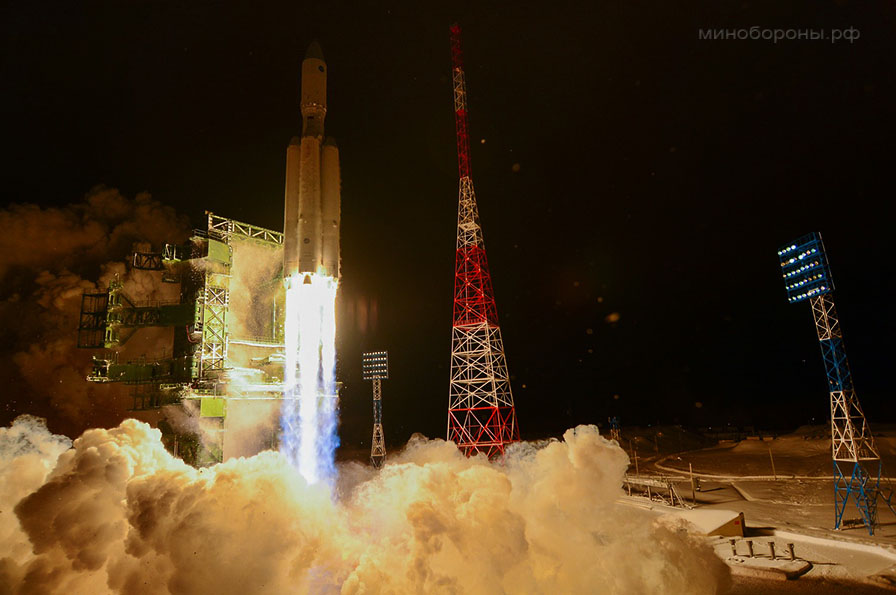Russia's New Heavy-Lift Rocket Aces First Test Flight

WASHINGTON — The Russian space agency, Roscosmos, successfully demonstrated the heavy-lift version of its long-awaited Angara series of rockets Dec. 23 from the Plesetsk Cosmosrome in northern Russia, the agency said.
The Angara-A5 successfully placed a 2-ton dummy payload into geosynchronous orbit some nine hours after lifting off at 8:57 a.m. local time, according to the Moscow-based Khrunichev State Research and Space Production Center, the vehicle's prime contractor.
The rocket featured three common-core stages fueled by liquid oxygen and kerosene and was topped by a flight-proven Breeze-M upper stage. The total liftoff mass was 768 metric tons, Khrunichev said. [Best Russian Space Missions of All Time]
After separating from the third stage, the Breeze-M delivered the dummy payload to the desired orbit. As planned, the upper stage remained attached to the dummy payload, and subsequently performed two additional maneuvers to reach a graveyard orbit, Khrunichev said.
Angara is a modular series of rockets designed to launch different classes of payloads to various orbits. The heavy-lift version will enable Russia to launch geostationary-orbiting satellites from its own territory. Currently such satellites are launched from the Baikonur Cosmodrome in Kazakhstan aboard the Proton rocket, which uses a highly toxic hydrazine fuel.
The Angara-A5 flight follows the successful launch in July of a smaller version of the family, Angara 1.2, on a suborbital mission.
This story was provided by SpaceNews, dedicated to covering all aspects of the space industry.
Get the Space.com Newsletter
Breaking space news, the latest updates on rocket launches, skywatching events and more!
Join our Space Forums to keep talking space on the latest missions, night sky and more! And if you have a news tip, correction or comment, let us know at: community@space.com.
Warren was the former Editor-in-Chief for SpaceNews from 2008-2016 where he set editorial direction for weekly newspaper and website covering global space industry. He also led editorial team including reporters in Washington, Paris, San Francisco, Bangalore, Moscow and Tokyo; and freelance photographers and graphic designers. He's currently a senior strategist for BryceTech out of Alexandria, VA.










